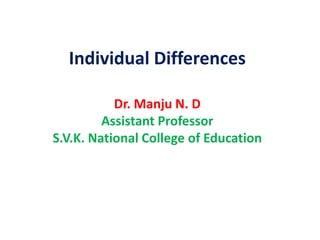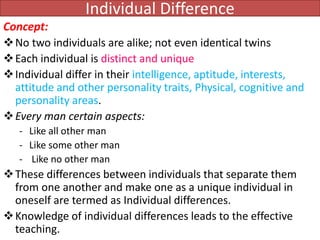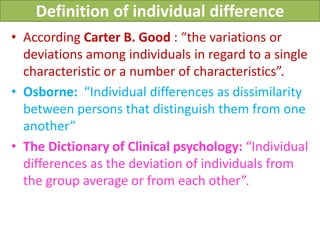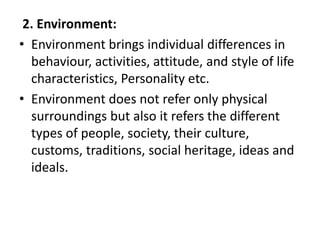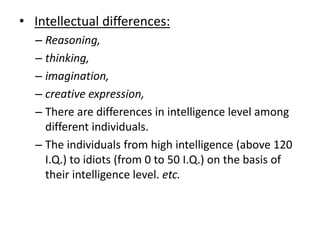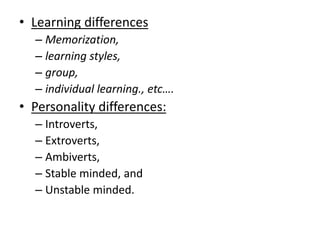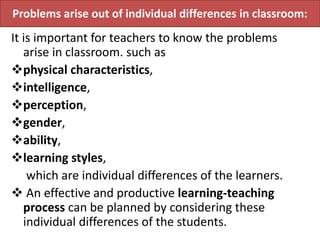This document discusses individual differences, which refer to the variations between individuals. It notes that no two individuals are alike, even identical twins, and that people differ in traits like intelligence, interests, personality, and physical characteristics. These differences are caused by factors like heredity, environment, race, sex, age, and education. The document outlines dimensions of individual differences and educational implications, such as tailoring curriculum, teaching methods, activities, and grouping to students' varying abilities and needs. It also discusses problems that can arise from individual differences in the classroom and remedial measures teachers can take.
